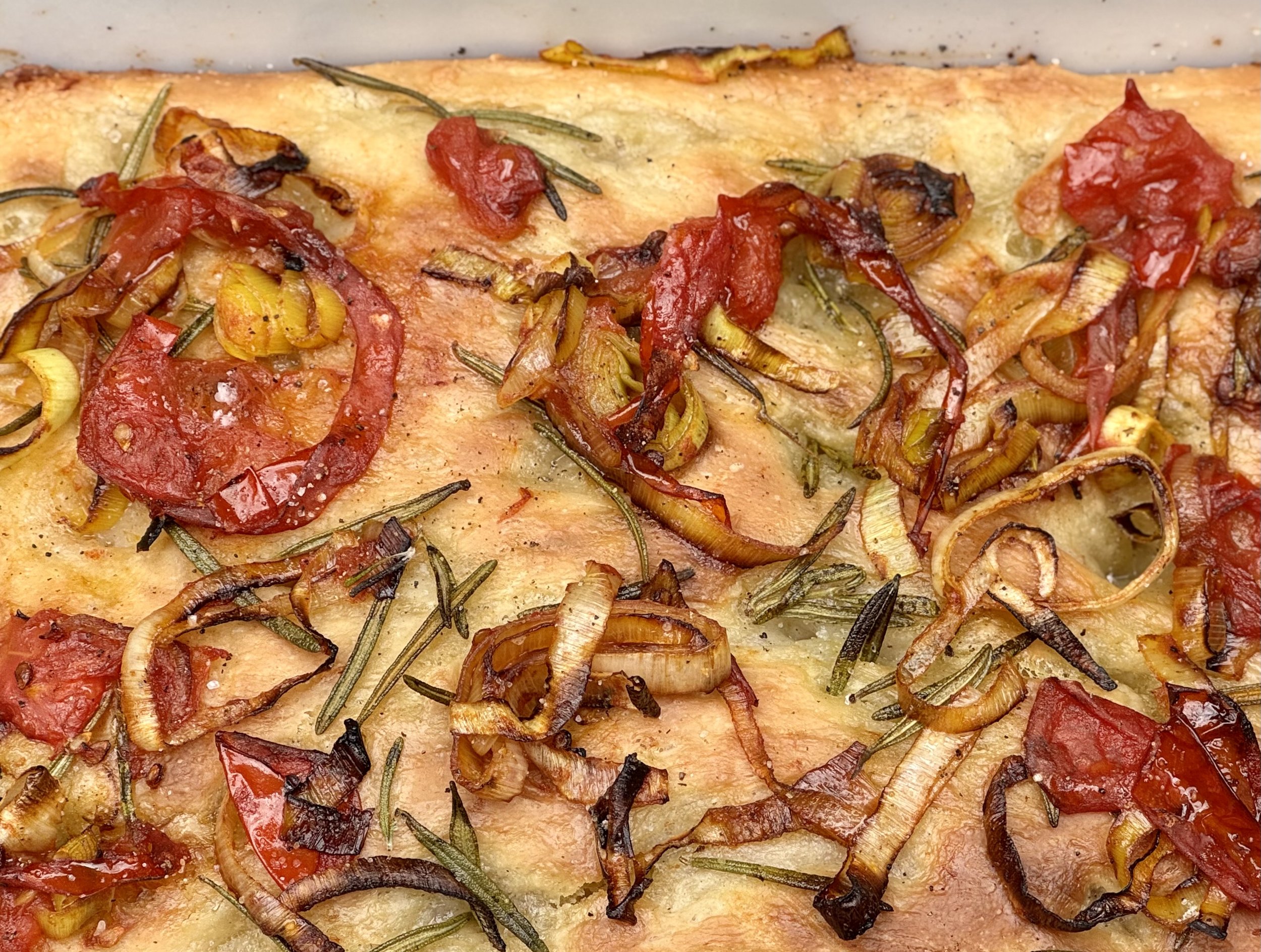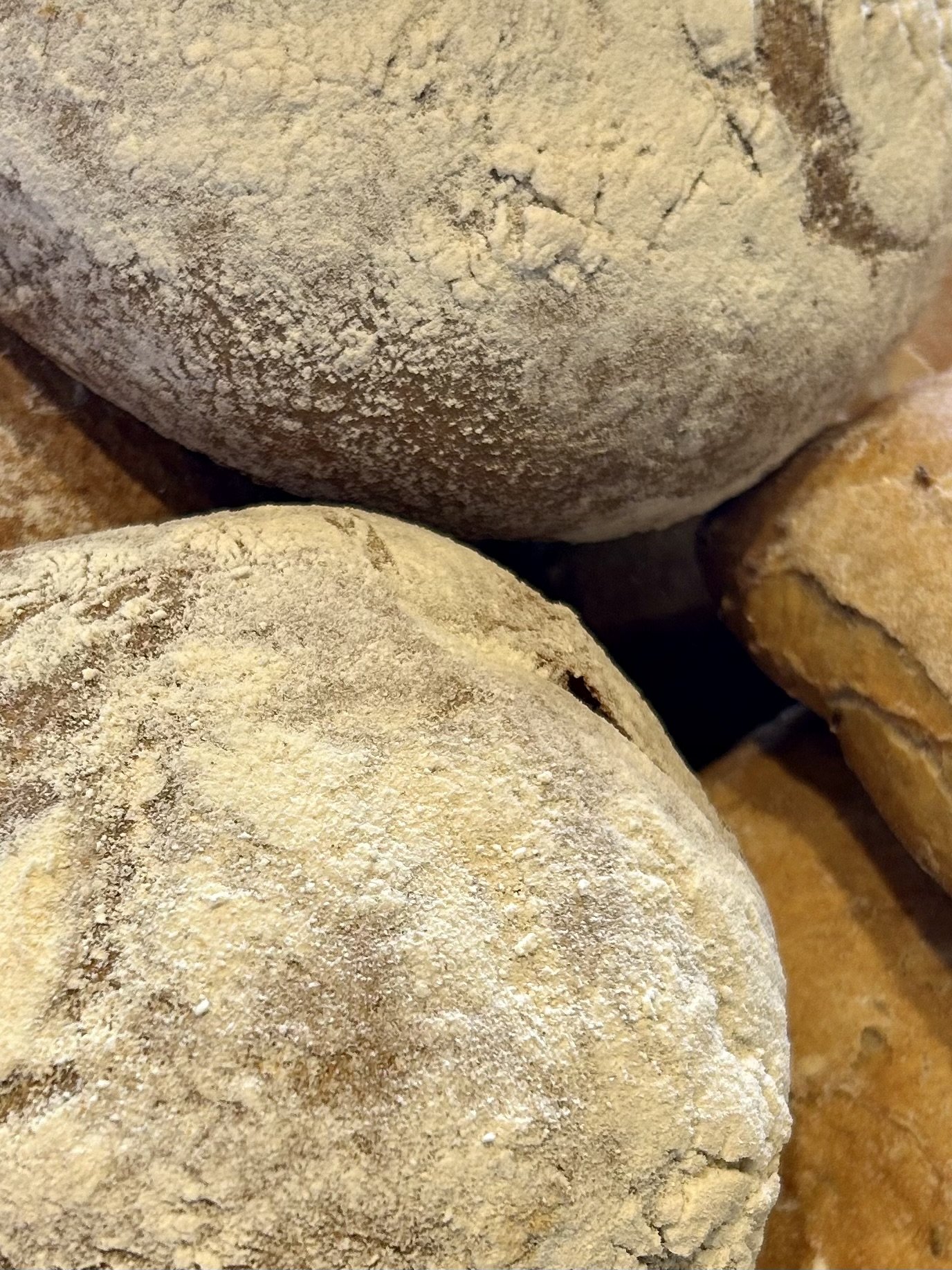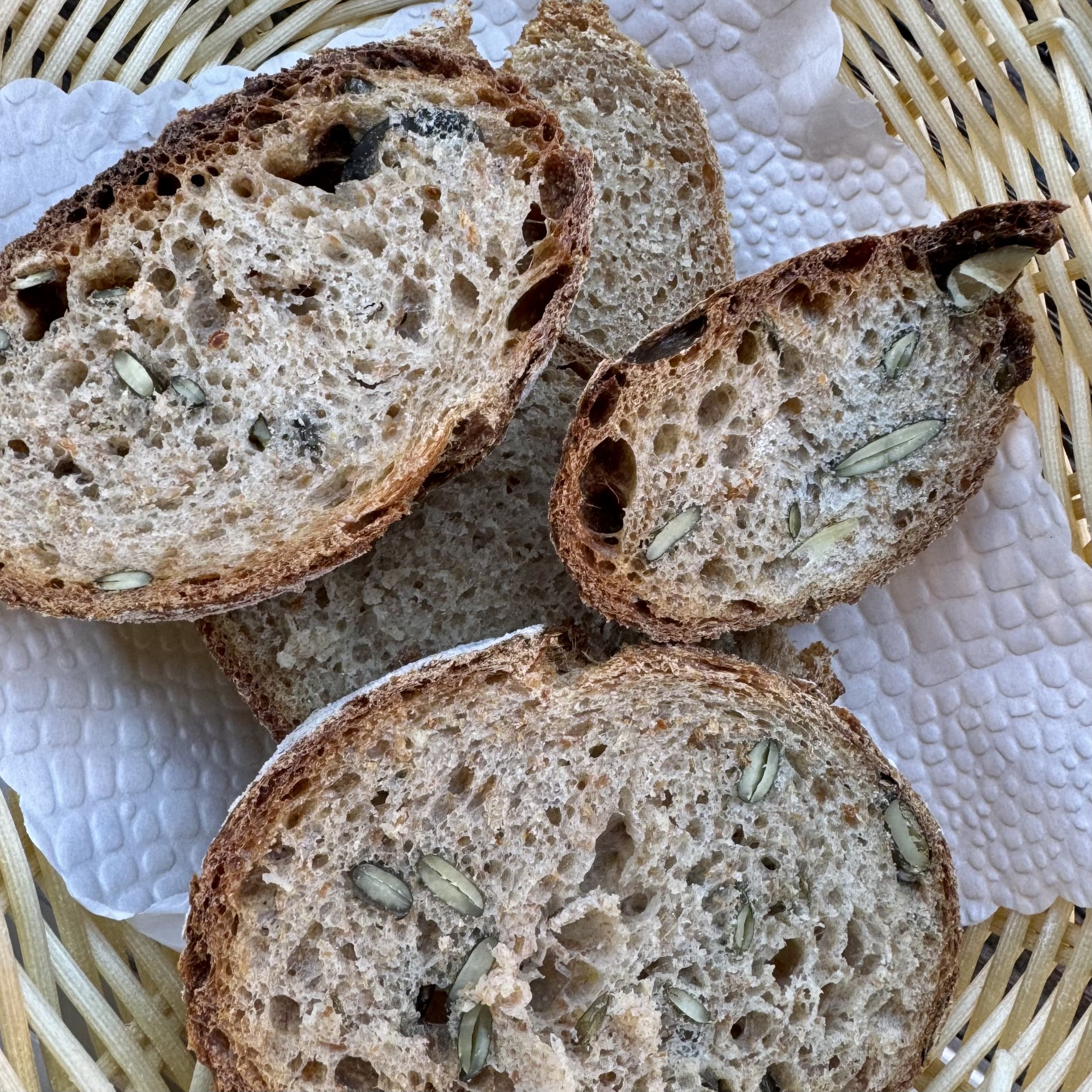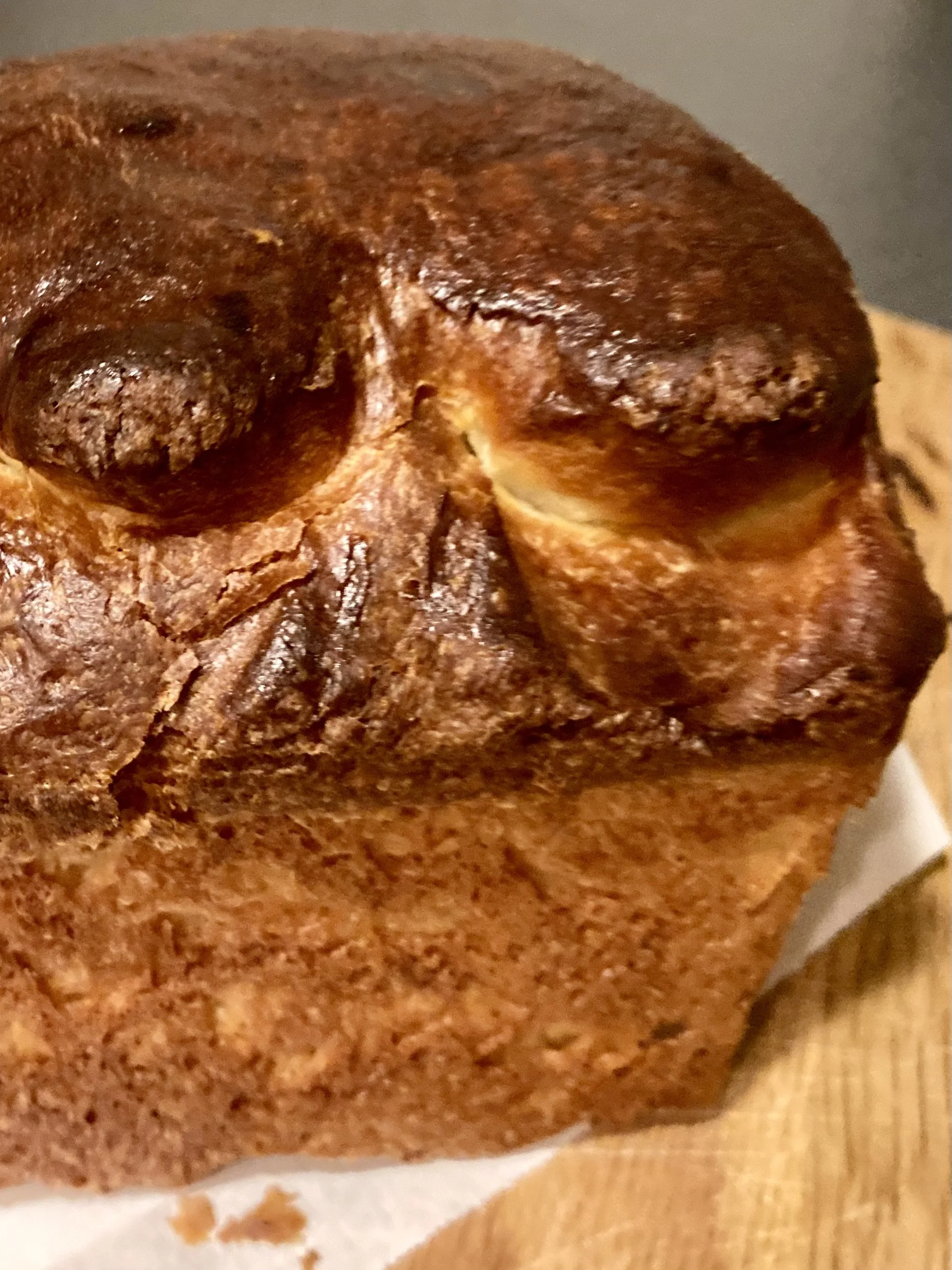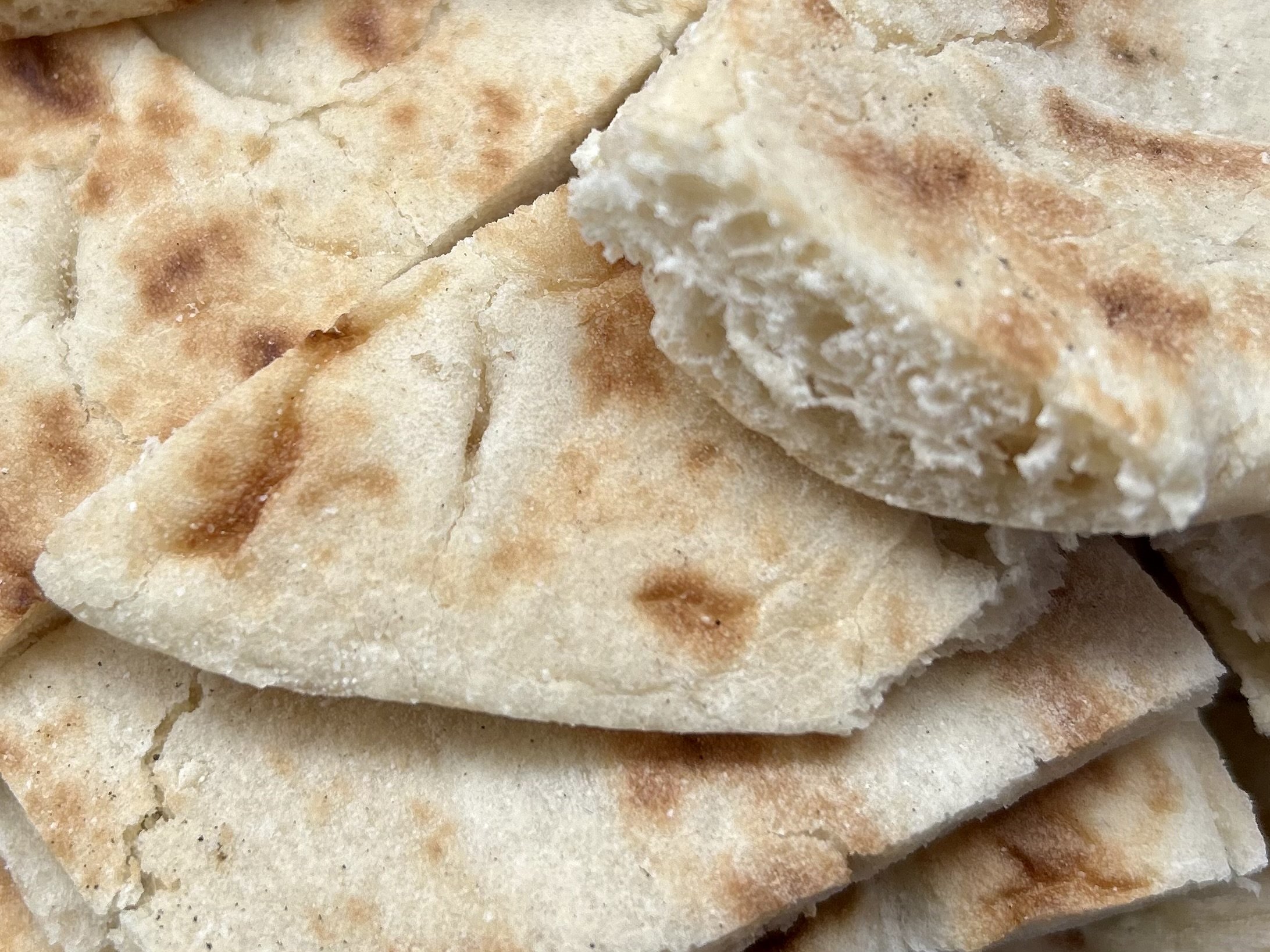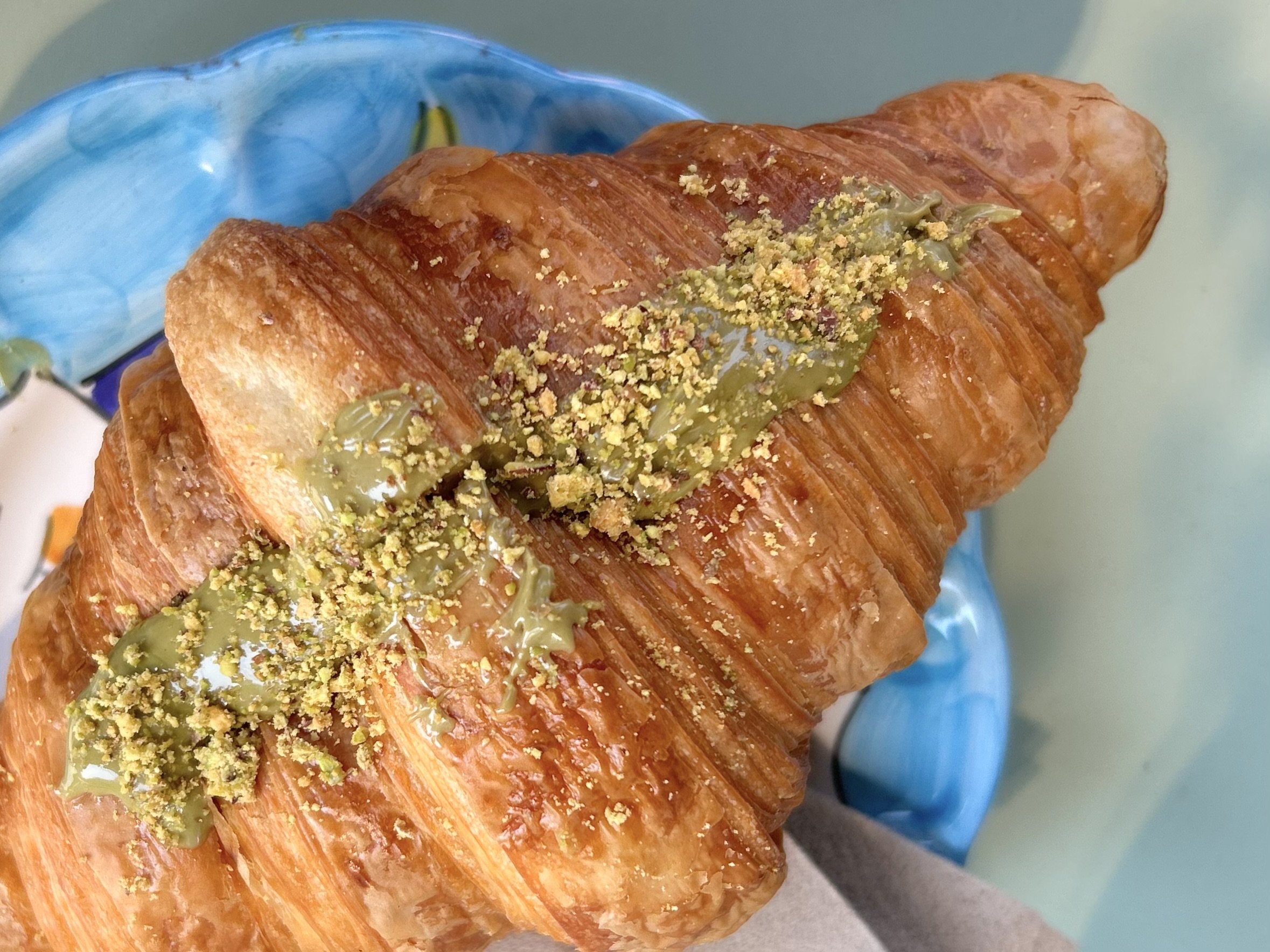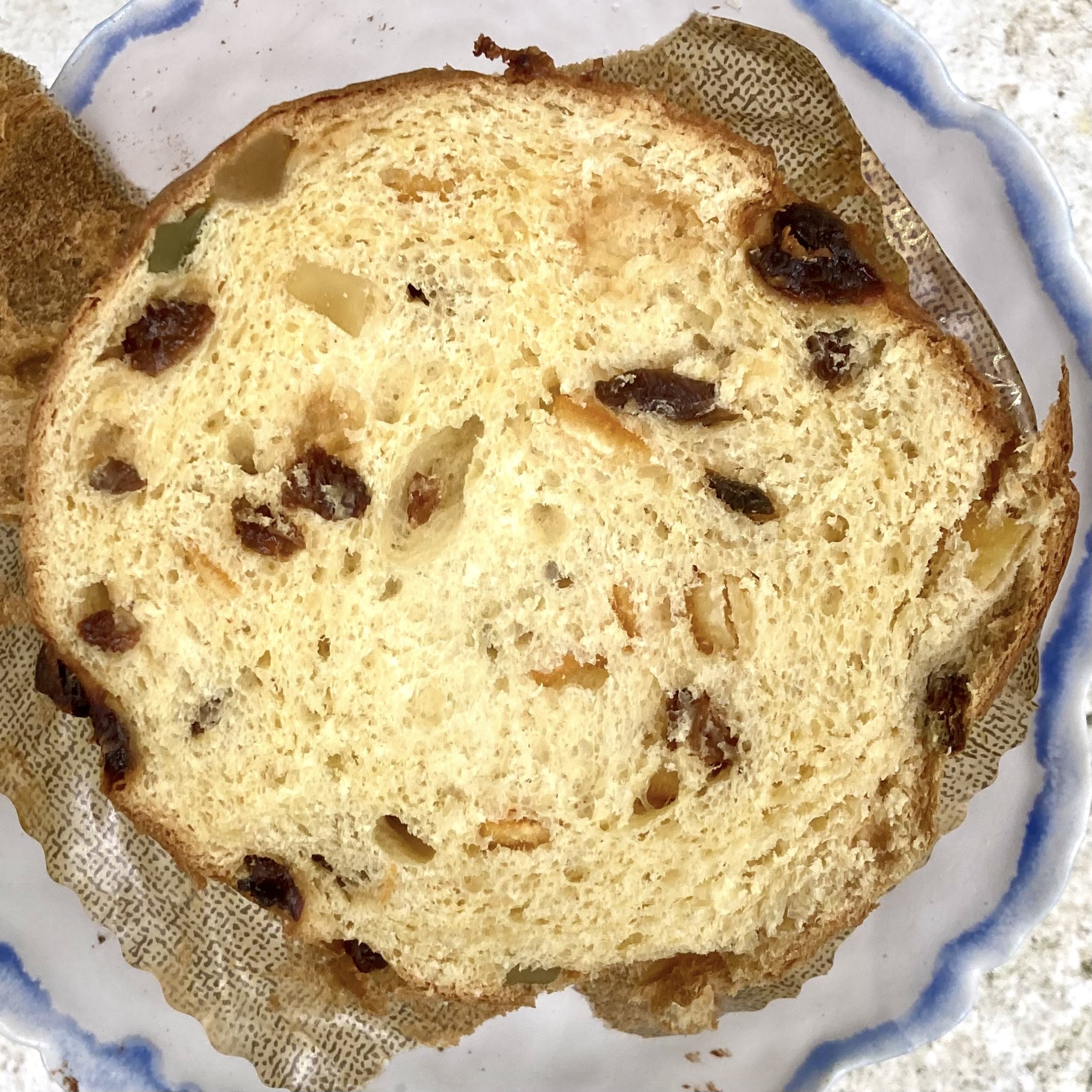Breads and desserts.
Bread and desserts are the twin expressions of comfort - one is born from hunger, the other from longing…
Bread anchors us to the earth: it is warm, honest, and rises from grain and patience.
Desserts are a celebration: sweet flights of fancy that remind us life is to be savored.
Together, bread and desserts tell the full story of appetite from the simplest need to the most extravagant joy.
Humans have made bread for ~ 10,000 years.
Neolithic farmers began cultivating wild grains and baking primitive flatbreads in the Fertile Crescent (a crescent-shaped region in Western Asia including the Tigris and Euphrates rivers and the Mediterranean Sea).
The discovery of leavening (wild yeast causing dough to rise) transformed bread-making in ancient Egypt ~ 3000 BCE.
The Mesopotamians and Romans refined techniques with improved milling and public bakeries. The Industrial Revolution brought mechanized production and refined white flour, and by the 20th century, mass-produced sliced bread became commonplace.
In more recent times, there has been a revival of traditional, artisanal breads around the world, as people rediscover bread’s diversity and cultural significance. Bread remains a daily presence and a deep cultural symbol across societies.
The pleasures of breadmaking.
Making bread offers us the tactile joy of kneading and the miracle of transformation. We are comforted by the aromas of baking. It is also satisfying: with each successful bake, we get a sense of mastery and self-sufficiency.
Breadmaking slows life’s pace, encourages mindfulness, and nourishes us. It is an act of creation that turns humble ingredients into something deeply satisfying and meant to be shared.
Focaccia.
Focaccia bread (Italy) is a versatile, leavened flatbread baked in the oven. It is easy to prepare and satisfying to eat - either on its own or with toppings (here, leeks, cherry tomatoes, and rosemary).
To prepare: Combine all-purpose flour (4 cups) with instant (“quick”) yeast (2½ teaspoons), then add salt (2 teaspoons). (Avoid mixing salt directly with the yeast, as salt can inhibit yeast activity.)
Make a well in the center and gradually pour in extra virgin olive oil (¼ cup) and warm water (1½ to 2 cups). Mix with one hand, bringing the ingredients together, and knead the sticky dough thoroughly. Turn the dough out onto a floured surface and knead it into a smooth ball. Coat the dough lightly with olive oil to prevent sticking. (To reduce sticking on your hands, rub your fingers and palms with a little olive oil.)
Let the dough rest for about 1 hour, or until it doubles in size (first rise). Spread it into an oiled baking pan, then use your fingers to press deep indentations across the surface. Drizzle with a mixture of olive oil and water, and sprinkle lightly with salt (avoid over-salting). Add fresh rosemary.
Bake for about 20 minutes at 220°C (430°F), keeping an eye on it to prevent burning. After about 10 minutes of baking, add your choice of toppings - such as sliced olives, cherry tomatoes, onions, or garlic. Finish with a final drizzle of olive oil and a sprinkle of salt to taste.
Ciabatta.
Ciabatta bread. It has a crusty exterior and an soft interior. It’s high-hydration dough requires careful preparation.
This ciabatta sandwich has italian sausage, peppers, sundried tomatoes, prolovlone cheese, and olive oil.
Sourdough breads.
Sourdough bread (wheat). Sourdough bread is produced through natural fermentation. Wild yeast and lactobacilli work together to leaven the dough and develop its characteristic acidity. The process involves extended fermentation and careful technique and temperature control is necessary to achieve optimal structure and flavor.
Rye sourdough (100-120 kCal per thick slice) is is nutritious and has more fibre than wheat sourdough bread. It is said to enhance satiety.
Rye sourdough bread with sardines, cherry tomatoes and olive oil. Excellent for breakfast.
Sourdough with seeds.
The baguette.
The baguette, a French cultural icon, is a symbol of simplicity perfected. The baguette de tradition française is made from just wheat flour, water, yeast, and salt, though elsewhere other flours may be used. It comes in various shapes. Its crisp, crackling crust and tender, airy crumb are universally appealing. The baguette is highly versatile and pairs well with a wide range of foods.
Brioche.
Brioche is a versatile, rich and soft crumb bread with high egg and butter content.
Pita bread.
Pita is a yeast-leavened round flatbread baked from wheat flour. It is popular in the Mediterranean basin. Pita is used with sauces or dips (hummus), or to wrap foods. It is also cut and baked into crispy pita chips.
Croissants.
The croissant is made from yeasted dough layered with butter. Multiple thin layers of dough and fat expand during baking to form a flaky structure.
Croissant and coffee: desired by many!
Croissant variations include fillings such as almond paste (here), chocolate, or ham and cheese.
Early morning ritual: croissant avec son café au lait (Lectoure, France). The croissant, a symbol of French baking, originated from the kipferl, brought from Austria to France in the 19th century.
Panettone.
Panettone, a sweet yeasted fluffy bread, is considered a cake and consumed mostly in festive seasons.
Fruit tarts.
Almond apricot fruit tart. Fruit tarts are delicious and easy to bake. They provide a good base for seasonal fruits.
Various desserts and puddings.
Flan con dulce de leche, Montevideo (Uruguay).
Baked dessert and pudding variety (Venice, Italy).
Cannelé de Bordeaux (Bordeaux, France), deliciously soft inside, can be difficult to prepare.
Almond cookies and panna montata (whipped cream).
To prepare whipped cream: chill the panna fresca da montare (heavy cream), bowl, and whisk or beaters for a faster whip (cream will also hold its shape better). Whip, add sugar, and vanilla extract, or lemon zest (sparingly, to taste). Avoid over- whipping!
Butter cookies, baked for a horse’s birthday celebration. Once out of the oven, they were carefully and lovingly decorated with frosting.(Heidelberg, Germany).
Meringues are made by whipping egg whites with sugar to form a stable foam, then baking at a low temperature to dry them out. The denatured egg proteins trap air, with sugar stabilising the foam giving texture.
Birthday cake detail: celebrating a 65th birthday - and the long-awaited access to Medicare! (In the U.S., a person becomes eligible for national health insurance at age 65.) Brooklyn, New York.
Ice cream, one of the most beloved desserts. It is endlessly adaptable in flavor and texture.
Soft ice cream, vanilla and chocolate, from an ice cream van, New York.
Gelato ice cream: a classic Italian ice cream. It is very refreshing on a hot (35 C) summer day, Tricase, Italy.
Gelato is made with more milk and less cream than traditional ice cream, and typically contains little to no egg yolk. It’s slow churning results in a dense, silky texture and intense flavor.
Sorbetto, another Italian classic, is dairy-free and made from fruit purée, water, and sugar - it is light and very refreshing. Regional specialties include granita (Sicily), a coarser, crystalline frozen dessert often flavored with lemon, coffee, or almond.
